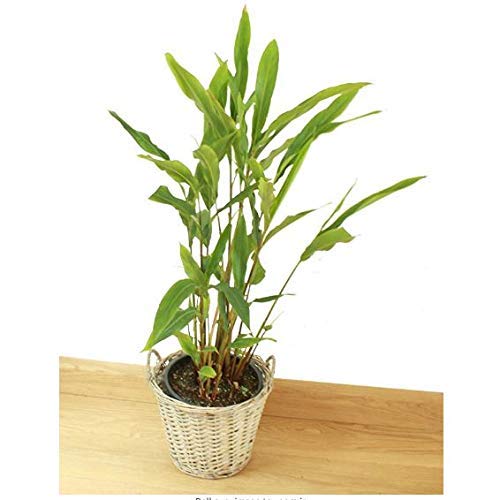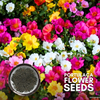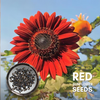
Cardamom Plant Elachi, Yallaki, Veldode, Ealakai, live plant
Guaranteed Safe Checkout
Green Paradise Offers Healthy
Cardamom
Plant
About Cardamom Plant
Cardamom, scientifically known as Elettaria cardamomum, is a perennial herbaceous plant belonging to the ginger family, Zingiberaceae. It is native to the evergreen forests of India, Bhutan, and Nepal and is also cultivated in other tropical regions such as Guatemala, Sri Lanka, Tanzania, and Vietnam. Cardamom is highly valued for its aromatic seeds, which are commonly used as a spice in cooking, baking, and traditional medicine.
Here are some key features and characteristics of the cardamom plant:
Growth and Appearance:
- The cardamom plant can grow up to 2 to 5 meters (6.5 to 16 feet) in height.
- It has thick, fleshy rhizomes from which shoots emerge.
- The leaves are large and lance-shaped, with prominent parallel veins.
- The plant's inflorescence emerges from the rhizome and grows into a panicle that bears small, greenish-white flowers with purple veins.
Seeds and Pods:
- The cardamom plant produces small, triangular-shaped, and aromatic seeds contained within pods.
- The pods are green when immature and turn pale yellow to pale brown as they ripen.
- Each pod contains numerous small seeds, which are the part used for culinary and medicinal purposes.
Culinary Use:
- Cardamom has a strong, sweet-spicy flavor with citrusy and minty undertones.
- It is used as a spice in both sweet and savory dishes, adding depth to curries, rice dishes, desserts, and beverages.
- It is a key ingredient in various spice blends, such as garam masala in Indian cuisine.
Medicinal Uses:
- In traditional medicine, cardamom has been used for its potential health benefits.
- It is believed to aid digestion, relieve gastrointestinal issues, and freshen breath.
- Some studies suggest that cardamom may have antioxidant and anti-inflammatory properties.
Cultivation:
- Cardamom plants prefer tropical climates with a combination of high humidity and moderate temperatures.
- They require well-drained, loamy soil and partial shade.
- Cardamom plants take about 2 to 3 years to mature and start producing pods.
Harvesting:
- Cardamom pods are usually harvested when they are fully mature and still green.
- This is the peak time when the seeds inside the pods have the highest aromatic compounds.
Types of Cardamom:
There are two primary types of cardamom used widely: green cardamom (Elettaria cardamomum) and black cardamom (Amomum subulatum). Green cardamom is the more common variety, used in most culinary applications. Black cardamom has a more smoky and robust flavor and is commonly used in savory dishes, especially in Indian and Southeast Asian cuisines.
Cardamom is not only prized for its culinary uses but also for its significance in cultural and traditional practices. It has been a valuable spice for centuries and continues to be cherished in various parts of the world for its unique flavor and aroma.
How To Grow Cardamom Plant
Growing a cardamom plant requires a warm and tropical climate, as it is a delicate and sensitive plant. Cardamom (Elettaria cardamomum) is a popular spice known for its aromatic seeds, which are commonly used in cooking, baking, and brewing beverages.
Here's a step-by-step guide to help you grow a cardamom plant:
Climate and Location:
- Cardamom plants thrive in warm, humid, and tropical climates with temperatures between 68°F to 86°F (20°C to 30°C).
- Because direct sunlight might burn the leaves, choose a site with some shade.
- Protection from strong winds is also essential.
Soil:
- Cardamom plants prefer rich, loamy soil that is well-draining and slightly acidic (pH around 6.0 to 6.8).
- Improve the soil by adding compost or well-rotted manure to enhance fertility and drainage.
Propagation:
- Cardamom is typically propagated from rhizomes, which are the underground stems of the plant.
- Obtain healthy rhizomes from a reputable nursery or garden center.
Planting:
- Plant the rhizomes about 2 to 4 inches (5 to 10 cm) deep in the soil.
- Space multiple rhizomes at least 3 feet (1 meter) apart to allow enough room for growth.
Watering:
- Cardamom plants require consistent moisture but dislike waterlogged conditions.
- Water the plants regularly, keeping the soil evenly moist, especially during dry periods.
Mulching:
- Applying a layer of organic mulch around the plants helps retain soil moisture and suppresses weed growth.
Fertilization:
- Feed the cardamom plant with a balanced fertilizer during the growing season (spring and summer) to support healthy growth.
- You can use a slow-release organic fertilizer or one specifically formulated for spices.
Pruning:
- Regularly remove any dead or yellowing leaves to maintain the plant's health and appearance.
- Prune the flower stems after blooming to encourage further growth.
Pests and Diseases:
- Watch out for common pests like spider mites, aphids, and whiteflies.
- To get rid of them, apply neem oil or insecticidal soap.
- Prevent waterlogged conditions to avoid root rot and other fungal diseases.
Harvesting:
- Cardamom plants typically take about two to three years to start producing seeds.
- Harvest the cardamom pods when they are fully mature but still green.
- The seeds inside should be dark brown and fragrant.
Storage:
Once harvested, dry the cardamom pods in the sun until they are fully cured.
Store the dried cardamom pods in an airtight container in a cool, dry place.
Remember that growing cardamom requires patience and care. It's not the easiest plant to cultivate, especially outside its natural habitat, but with the right conditions and attention, you might be able to enjoy this flavorful spice straight from your garden.






